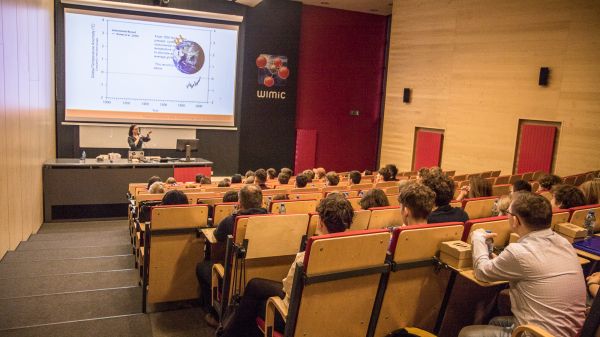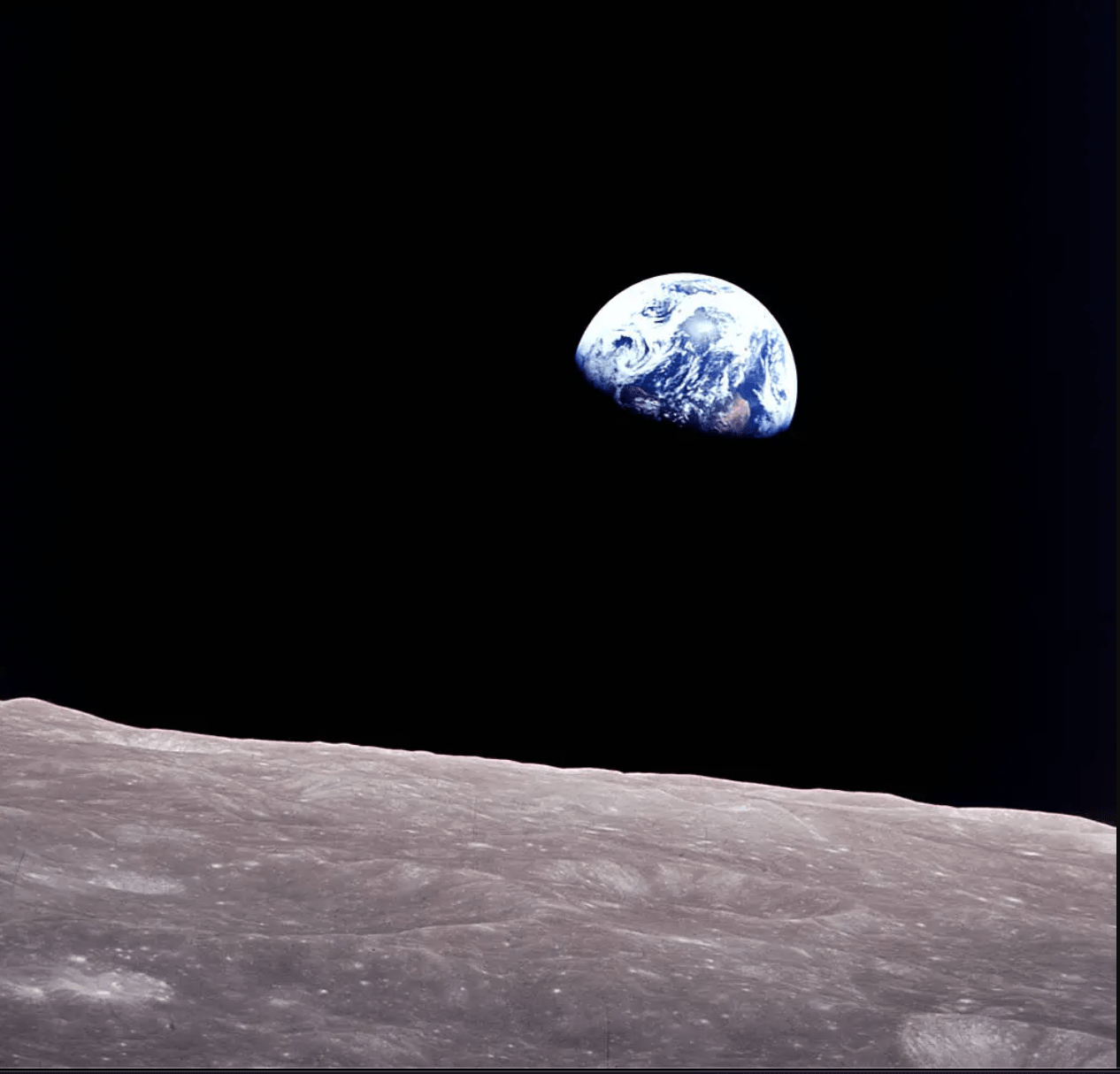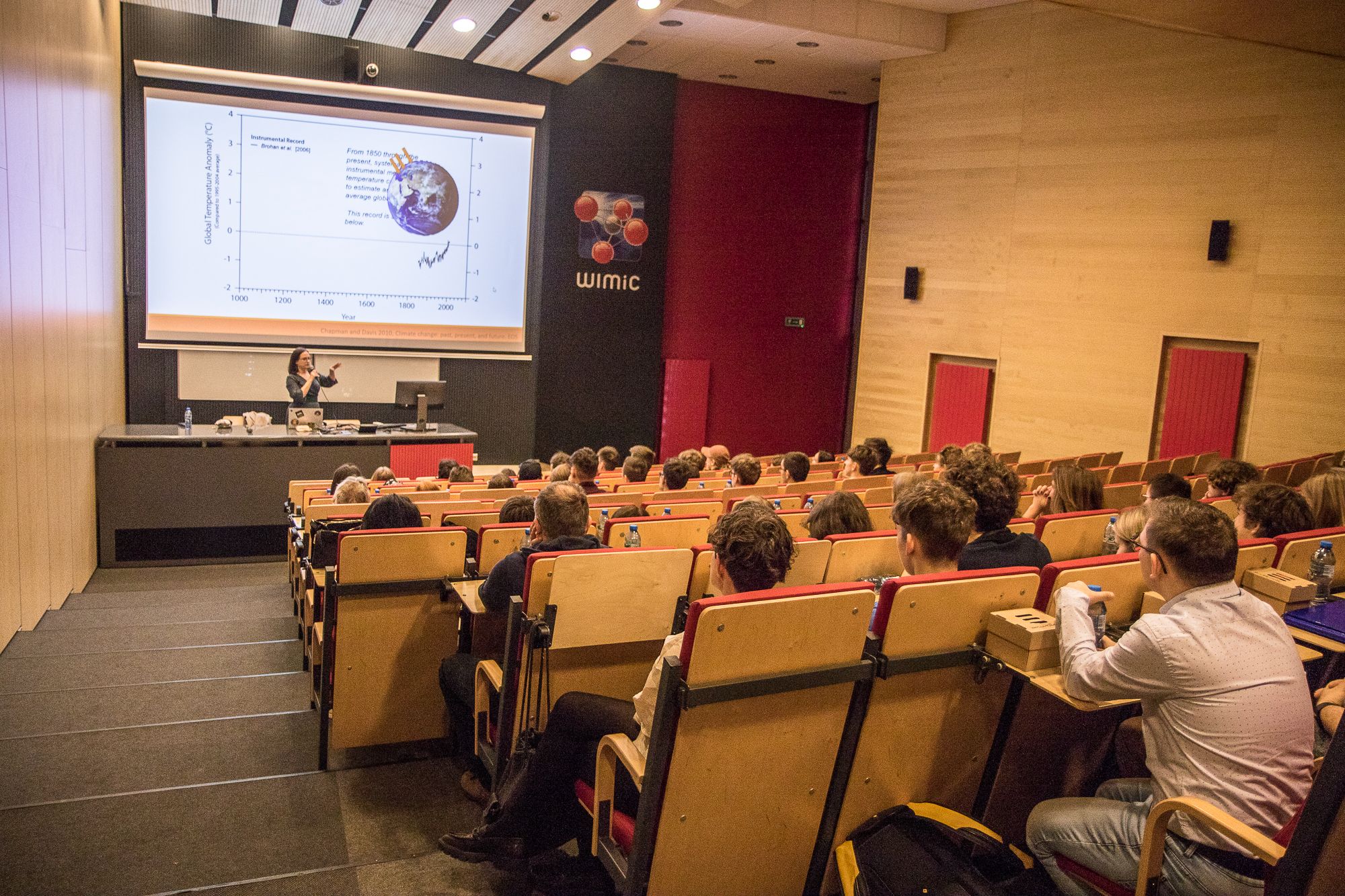Looking at Earth Through the “Eyes” of Satellites

Written by Anna Karahan and Anna Losiak of Europejska Fundacja Kosmiczna (European Space Foundation), a 2023 Pratt & Whitney E-STEM Prize Winner. Learn more about the Pratt & Whitney E-STEM Awards
The purpose of the Apollo 8 mission was, among others, to collect information on places suitable for landing on the Moon. The astronauts on this mission also took the first-ever photographs of the entire Earth.
What became the most iconic photograph was taken during the third of ten laps by William Anders, capturing the Earth rising above the lunar horizon. It evoked great emotions around the world, making its inhabitants aware of how unique and delicate their planet is—a blue dot suspended in the endless universe.
Fifteen months later, this photo became the unofficial symbol of the first Earth Day in history. On April 22, 1970, over 20 million people took to the streets of American cities to protest the destruction of the natural environment. These activities led to the birth of the ecological movement and the creation of the Clean Water Act and the Clean Air Act, and prompted institutions to monitor environmental pollution. Since 1990, Earth Day has become a truly global celebration. It is estimated that one billion people around the world will participate in Earth Day-related activities this year.

Image Credit: NASA
Currently, as we are at a critical moment in the fight against climate change and global warming, environmental education and the preparation of younger generations to achieve a sustainable future have never been more important. Our European Space Foundation (Europejska Fundacja Kosmiczna) is engaged in educational and promotional activities in the field of space exploration. We connect the international community by organizing events, campaigns, and programs, creating and publishing content, exploring possible career paths for a new generation of professionals, and continuing to advance space sciences for Earth’s sustainable development.
In our E-STEM projects, we focus on teaching students how to use satellite data to better understand our planet, and how to observe climate change and respond to environmental challenges on a local and global scale.
Our project awarded by the Pratt & Whitney E-STEM Awards, “How do we know the climate is changing?,” was launched in 2021 during our annual international European Rover Challenge (ERC) event and continued at schools during the spring semester. We organize a cycle of interactive workshops and lectures to teach primary and high school students what causes the Earth’s climate to change, the difference between geological records on natural changes and anthropogenic causes, how satellite data is being obtained, and how climate change is being measured. We have trained more than 5,650 people through the ERC and events at local schools.
Workshops are accompanied by a number of lectures and educational videos by our international speakers. Covered topics included the usage of satellite data by private companies and government agencies to track the level of pollution, monitoring the level of irrigation and mapping quantity of trees in urban areas, tracking road traffic levels, and issues related to the usage of satellite data in precision agriculture to decrease water and fertilizer usage.
Green Skills and Future Careers
The Pratt & Whitney E-STEM Awards and the support from our local partner Fundacja Empiria i Wiedza helped us develop this project and bring it to the next level. On April 12, 2024, we organized one-day workshops for high school students launching the project “Earth Rescue Challenge—Water Edition,” which uses satellite data for responsible and sustainable management of water resources.
One of the main effects of climate change is the disruption of the water cycle on our planet. This has a direct impact on the supply of water for drinking, sanitation, and food and energy production. More frequent and severe floods and droughts are also serious economic challenges and require proper management of water resources.
In order to teach high school students how to tackle these problems, we organized an in-person, one-day workshop for more than 75 participants, coming from all over Poland. The event was held at the AGH University in Krakow, Poland. We started with an introductory lecture by Dr. Anna Losiak called “How do we know the climate is changing?” This explained what the sources of information in climate sciences are. Later, after dividing students into three groups, they were introduced to different topics related to monitoring and managing water resources. Dr. Dorota Pierri from the Department of Hydrogeology and Engineering Geology of AGH University introduced students to concepts of underground water resources and problems related to their management and preservation. Marta Milczarek from the Crisis Information Center of the Polish Space Research Center Polish Academy of Sciences showed how to use remote sensing data during crisis management of floods and droughts. Finally, Tomasz Furtak from a private company, CloudFerro, allowed students to practice their knowledge on the usage of Sentinel data. The event was finished with a plenary lecture given by Łukasz Wilczyński from the European Space Foundation that introduced participants to strategies on how to prepare efficient presentations of their ideas.

Participants at the Earth Rescue Challenge – Water Edition workshop on April 12, 2024, listen to a lecture by Dr. Anna Losiak called “How do we know the climate is changing?” Photo Credit: Anna Karahan

At the Earth Rescue Challenge – Water Edition workshop, April 12, 2024. Tomasz Furtak introduces practical exercises using Sentinel data. Credit: Anna Karahan
Within the next couple of months, those 75 participants will form ten student teams and will use this knowledge and new skills to observe their region’s satellite data. Their goal is to determine local threats and to propose solutions to effectively protect and manage water resources. The strongest proposals will receive a grant for the implementation of their project and support from specialists. The final pitches of these water solutions will take place during the 10th edition of the European Rover Challenge (ERC), September 6–8, 2024. During the event, our students and the general public will have an opportunity to take part in several climate change-focused workshops and lectures with international experts.
Through our E-STEM projects, we prepare students to address Earth’s environmental challenges by giving them collaborative, hands-on experiences with cutting-edge technology. We want to equip them with the knowledge and skills the future and the green economy requires. We want to make them aware that we must treat Earth as a living organism, and that our small, daily decisions have an influence on Earth at a local and global scale.
We encourage the next generation to make life better on our blue dot, and protect her not only on Earth Day!

